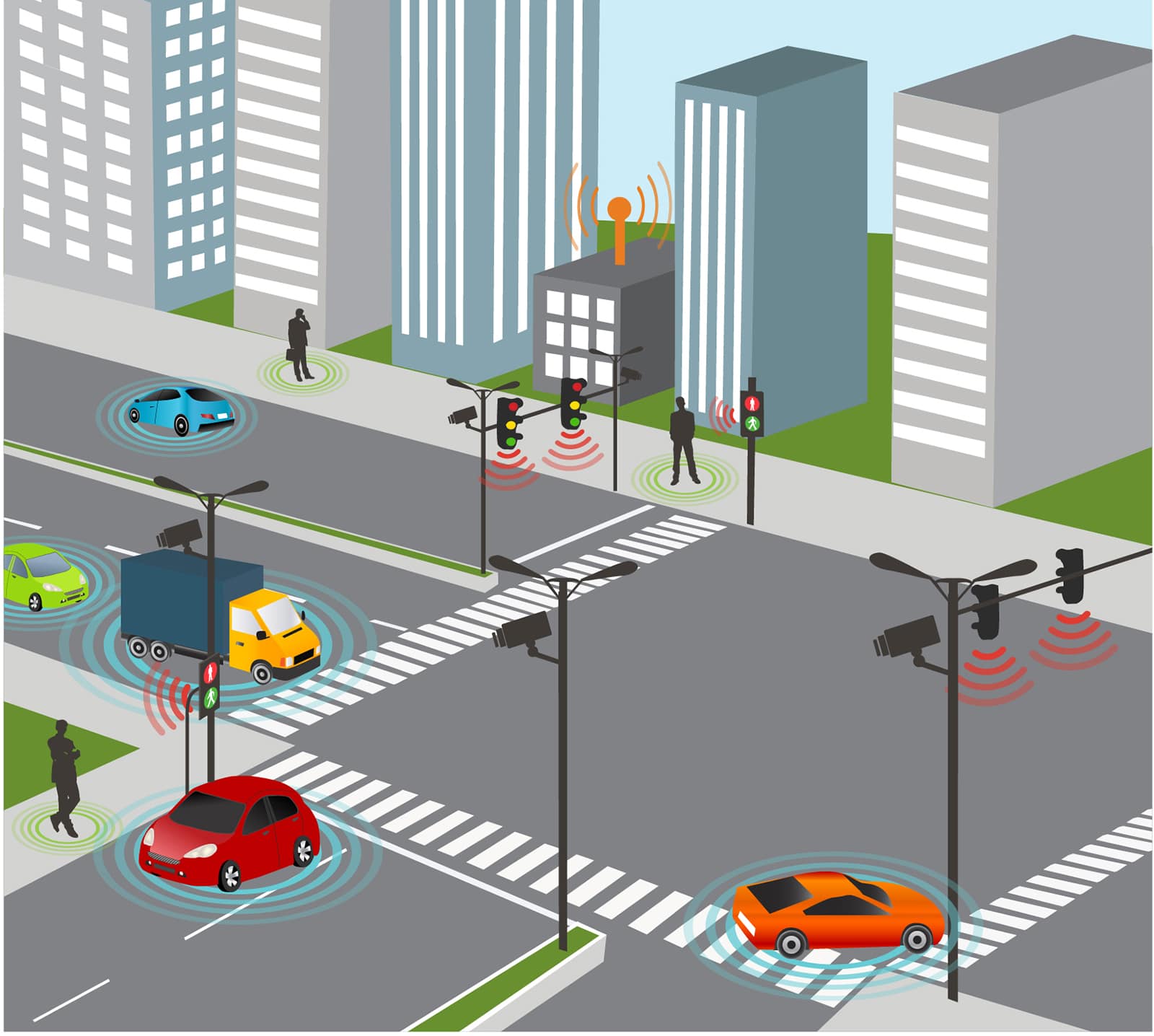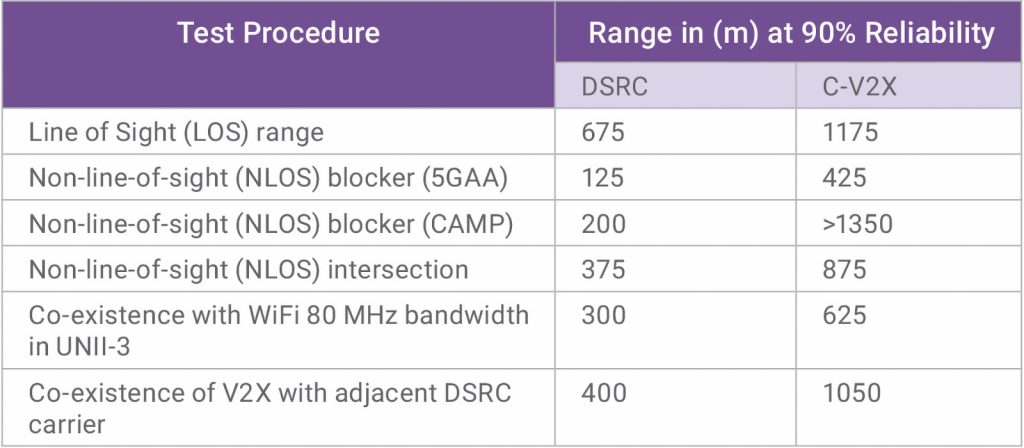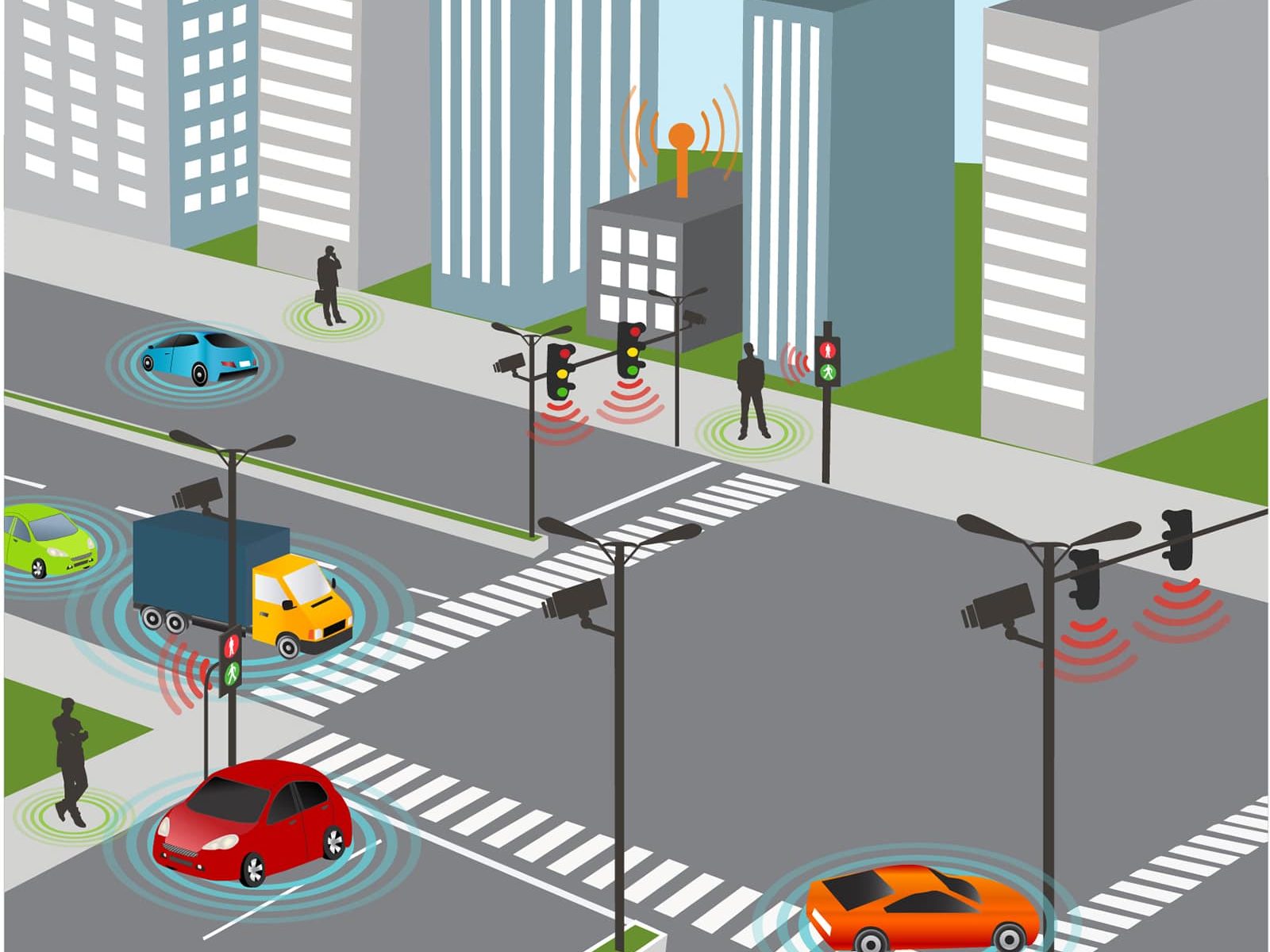Amid the glamor of autonomous vehicles and hot new ADAS features, communication between vehicles and other vehicles, pedestrians, cyclists or infrastructure, generally labeled V2X, doesn’t get as much press, perhaps because adoption is still pretty early or because it’s technology under the hood (quite literally) and therefore not as immediately glamorous as other advances. That’s a shame because applications of V2X are likely to have important impact in safety and convenience long before full autonomy becomes a reality.

(Image Source: Synopsys)
Applications
Consider these potential applications of V2X. In communication between vehicles it can augment existing methods to help with left-turn assistance (for those of us driving on the right) emergency braking warnings and improved situational awareness at intersections. Extending Waze concepts, it can control or suggest speed adjustments to account for traffic congestion, also update your GPS map with real-time updates on lane closure and highway construction activity. V2X in some form is essential to support over-the-air (OTA) software updates for the now-extensive range of software-driven systems in your car, from map updates to bug fixes to security updates and more.
One really nice capability could be see-through vehicles. If your car can tap into the front-facing camera of that giant truck in front of you, you’ll be able to see what’s ahead of that truck. Kind of important if you’re tailgating and traffic ahead of the truck has come to a stop. Or if you want to pass but can’t see around the truck.
Another very interesting application is in support of platooning. This is a technique in which trucks and/or cars drive in coordinated groups. Platooning can reduce congestion since such groups can be more closely spaced than would be possible if they had to allow for human reaction times. The primary intent behind this idea is in support of self-driving vehicles on automated highways. This might be how autonomy takes off, long before it becomes universal. Reading a book or napping while you’re on a highway could be a reasonably near-term objective if we can implement the V2X infrastructure in cars and on the highways to support this. (There’s still a question of whether the lead vehicle needs a human driver. And how you exchange leads when the current lead wants to leave the platoon. But this still seems closer to feasible than grander goals.)
Technologies – Wi-Fi and Cellular
The ideal communication technology in support of V2X is a little contentious. Clearly any such technology must be extremely reliable under a very wide variety of conditions (weather, and interference from other EMI sources) and it must guarantee very low latency. You really don’t want to see a “buffering” spinning wheel in any of the applications I just described.
Wi-Fi advocates have made a strong case that Direct Short Range Communication (DSRC), a subset of 802.11, is the real candidate for V2X. Work on this standard goes back a long way but it seems compelling need is only now starting to catch up. Nevertheless it is the prescribed standard in the US and the NHTSA has already started the process for a mandate that all cars in the US come equipped with DSRC.
However – the 3GPP standards group responsible for cellular standards is a relative late-comer to this domain but has been working hard on ultra-reliable low-latency communication, known as C-V2X, as one of the principal components of 5G. This supports 1ms latency end-to-end, in compliance with the NHTSA requirement, it provides improved reliability and it support bandwidth of up to 20Gbps, allowing for high-fidelity streaming if needed. Further, C-V2X seems to have a 2X+ range advantage over DSRC, meaning it will require less small/pico-cell stations to support a given area. Finally, chips and modules are expected to become available this year and to appear in vehicles in 2020.

(Image Source: Synopsys)
What Next?
Now the US Department of Transportation are hedging their bets on that mandate I mentioned earlier. When their review started, DSRC was the only option. Now C-V2X looks like a strong contender. Heidi King, deputy administrator at NHTSA has stated that “USDOT remains technology-neutral relative to communications protocols that support V2X technology.” Some companies and region have already adopted DSRC for some applications (eg Cadillac, Singapore, Utah), C-V2X for some others (Ford, Las Vegas). It’s a race but important to realize that the race has barely started.
If I had to bet, I’d go with the cellular solution as the long-term winner. This has nothing to do with technology. My bet is based on infrastructure cost of ownership and dependability of support. Any Wi-Fi solution will demand wide deployment of access points, plus the back-haul from those access points to gateways, etc. Who is going to pay for and maintain that infrastructure – local government (unlikely) or new private ventures? Do we have to expect unreliable support until those private ventures mature? We already have matured companies vested in providing wireless support locally and worldwide. Not that they’re perfect or can’t improve but building on that existing business and physical infrastructure makes more sense to me than launching new businesses to support a new physical infrastructure.
Key enablers of C-V2X technology are obviously the 5G radio, SoC integration and other IP components required to complete a 5G C-V2X interface. Since such solutions must be certified to ISO 26262 standards, integrators need not only the right components from their IP supplier but also confidence in their capability, depth and track record in providing ISO 26262 safety packages and certification. The right choice must meet functionality, performance, quality, and reliability levels in down to the most aggressive FinFET feature sizes. You can learn more about the Synopsys Automotive IP Segment view of this domain HERE and read more about how they are supporting design in this area HERE.
Share this post via:






Comments
2 Replies to “5G and V2X”
You must register or log in to view/post comments.